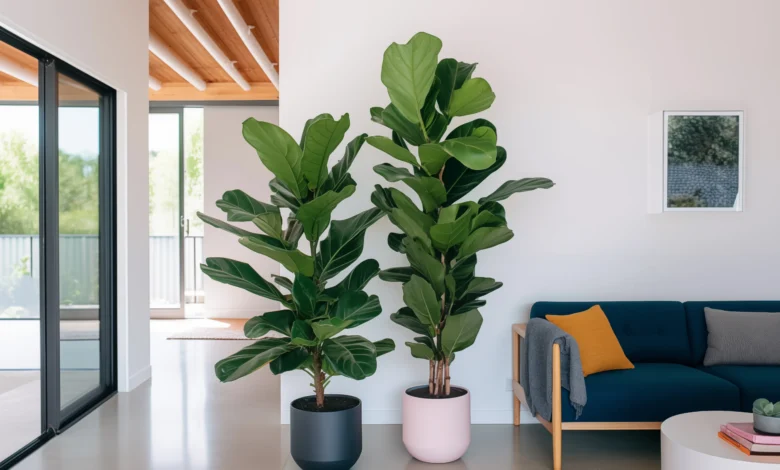Taller Plants: A Guide to Growing and Caring for Them

Taller Plants: A Guide to Growing and Caring for Them
Growing taller flora can add dramatic contact to your lawn or indoor space, presenting vertical beauty and lush, colorful surroundings. Whether you are cultivating towering sunflowers in your garden or nurturing an imposing indoor ficus, knowing the important thing principles of plant increase, care, and renovation is crucial. This comprehensive guide will help you cultivate and keep healthful, staggering tall plants, regardless of their placement.
Understanding Tall Plants
What Defines a Tall Plant?
Tall flowers are generally characterized by their peak, which surpasses standard plant types. For lawn plant life, this frequent manner types that grow to 5 ft or extra. Indoor tall flowers might reach similar heights or at the least develop substantially taller than their neighboring plants.
Benefits of Growing Tall Plants
Visual Impact: Tall flowers create a dramatic impact in any area, serving as focal points or backdrops.
Privacy: In gardens and outdoor areas, tall plant life can act as natural displays or obstacles, offering privacy from acquaintances.
Shade and Shelter: They provide coloration for smaller vegetation or door spaces and shelter for the natural world.
Air Purification: Many tall flowers, specifically indoor types, contribute to purifier air by using filtering pollutants.
Choosing the Right Tall Plants
Outdoor Tall Plants
Sunflowers (Helianthus annuus): Known for his or her incredible height and bright blooms, sunflowers can attain as much as 12 feet. They thrive in complete solar and nicely-drained soil.
Corn (Zea mays): Often grown for its suitability for eating ears, corn can grow between 6 to ten feet tall. It requires plenty of sunlight and nutrient-rich soil.
Giant Verbena (Verbena bonariensis): This perennial capabilities clusters of small, crimson vegetation and may attain heights of 5 to 6 ft. It is appropriate for numerous soil types and situations.
Bamboo (Bambusoideae): Bamboo can grow rather tall, with a few species attaining over 30 ft. It’s perfect for creating privacy displays and calls for a chunk of management to control spread.
Indoor Tall Plants
Fiddle Leaf Fig (Ficus lyrata): Popular for its large, sleek leaves and impressive height, this plant can attain up to ten feet indoors. It prefers vivid, oblique mild, and a nicely-draining soil blend.
Rubber Plant (Ficus elastica): Known for its robust leaves and upright increase, the rubber plant can reach 6 to 8 feet indoors. It thrives in shiny, indirect mild and requires minimum watering.
Bird of Paradise (Strelitzia reginae): This plant can develop up to six feet tall interior, generating large, tropical leaves. It prefers vivid mild and high humidity.
Snake Plant (Sansevieria trifasciata): Though no longer as tall as others, it can nevertheless attain as much as four toes. It’s extremely low-preservation and can tolerate low mild conditions.
Planting and Growing Tall Plants
Site Selection
Sunlight: The tallest vegetation requires sufficient sunlight. Ensure they get hold of enough mild, both complete solar for outside plants or bright, indirect mild for indoor sorts.
Soil: Well-draining soil is critical. For outside plant life, make certain the soil is enriched with organic matter. Indoor vegetation frequently advantage of a peat-based mix with introduced perlite for drainage. Space: Tall plant life needs enough space to grow vertically and horizontally. Consider their mature size and make sure they have sufficient room to make bigger.
Planting Tips
Outdoor Planting: Choose an area that gives adequate daylight. Prepare the soil with the aid of adding compost and ensuring it’s unfastened and nicely draining. Follow the recommended planting depth for every species, normally planting on the identical depth as the nursery box.
Indoor Planting: Use pots with drainage holes to save you from waterlogging. Select a pot length that lets in for boom without being too big, which can cause overwatering.
Watering and Feeding
Watering: Tall plants normally require ordinary watering, but the frequency varies. Outdoor plant life usually wants greater common watering, especially all through dry spells. Indoor plant life has to be watered whilst the top inch of soil feels dry. Avoid waterlogging with the aid of ensuring proper drainage. Feeding: Fertilize tall flowers for the duration of their developing season (spring and summer) with a balanced, water-soluble fertilizer. Follow the commands for the dosage to prevent over-fertilization, which may damage the plant.
Pruning and Training
Pruning
Outdoor Tall Plants: Regular pruning helps keep the form and health of tall flowers. Remove dead or broken branches and spent vegetation to encourage new growth and save your ailment.
Indoor Tall Plants: Prune to manipulate top and form. Remove any lifeless or yellowing leaves and trim the leggy boom to encourage a bushier appearance.
Training
Staking: For outside tall flora, particularly those with heavy vegetation or fruits, use stakes to aid them and save you from bending or breaking. Place stakes when planting to avoid annoying the roots later.
Indoor Support: Use stakes or trellises to guide the boom of indoor tall flowers. This allows for preserving a straight and wholesome boom pattern.
Pest and Disease Management
Common Pests
Outdoor Plants: Look out for aphids, caterpillars, and spider mites. Use organic insecticidal soap or neem oil to deal with infestations.
Indoor Plants: Common pests include spider mites, mealybugs, and scale insects. Regularly look into your vegetation and deal with suitable insecticides or natural remedies.
Diseases
Outdoor Plants: Fungal diseases like powdery mold and rust can affect tall plants. Ensure accurate air circulation and avoid overhead watering to minimize these risks.
Indoor Plants: Root rot and leaf spot sicknesses can arise. Avoid overwatering and ensure the right drainage to save you root rot, and regularly easy leaves to save you fungal infections.
Seasonal Care
Outdoor Care
Spring and Summer: This is the active developing period for maximum tall vegetation. Ensure regular watering and feeding to assist their growth. Watch for pests and sicknesses.
Fall and Winter: In less warm climates, prepare tall flowers for winter by way of reducing again dead growth and making use of mulch to defend roots. In areas with moderate winters, keep to display for pests and provide occasional water.
Indoor Care
Year-Round: Indoor tall flora commonly have greater steady care habitual. Maintain suitable humidity levels, specifically for the duration of iciness whilst indoor air may be dry. Adjust watering and feeding primarily based on the plant’s increase cycle.
Conclusion
Growing and being concerned for tall plants requires a considerate approach to ensure their fitness and energy. By choosing the proper species for your environment, presenting the right planting and growing conditions, and keeping ordinary care, you may experience the grandeur and beauty of tall flora in your space. Whether you are enhancing your lawn with towering blooms or including a touch of elegance for your indoor environment, those towering giants will have a long-lasting influence.



